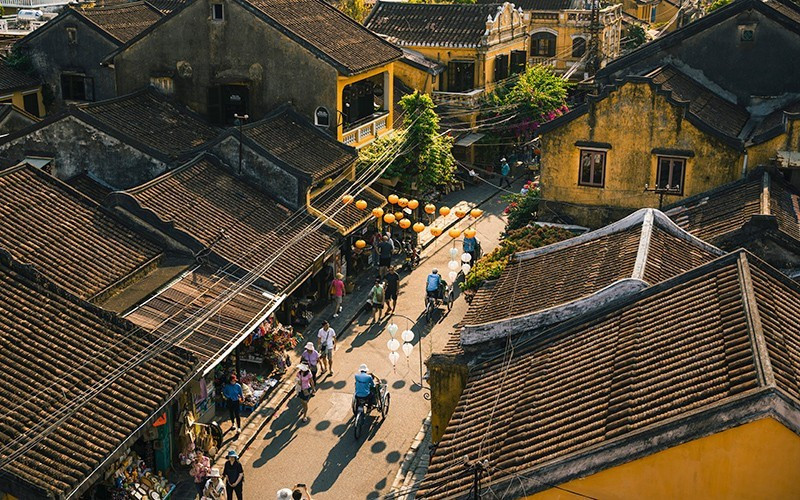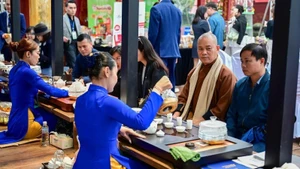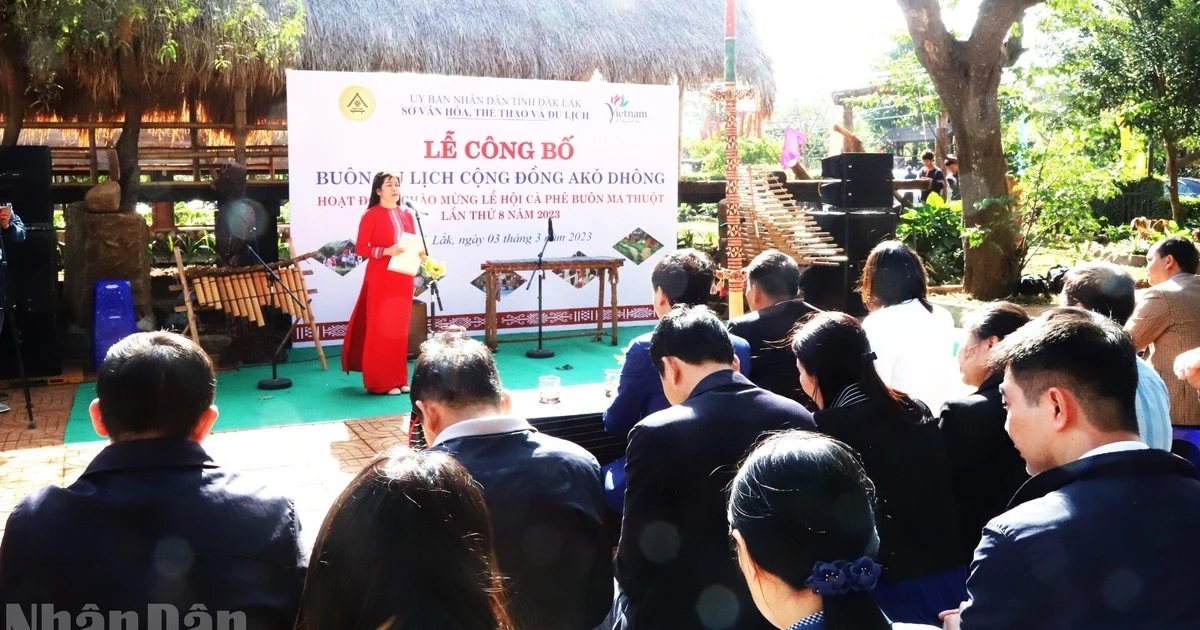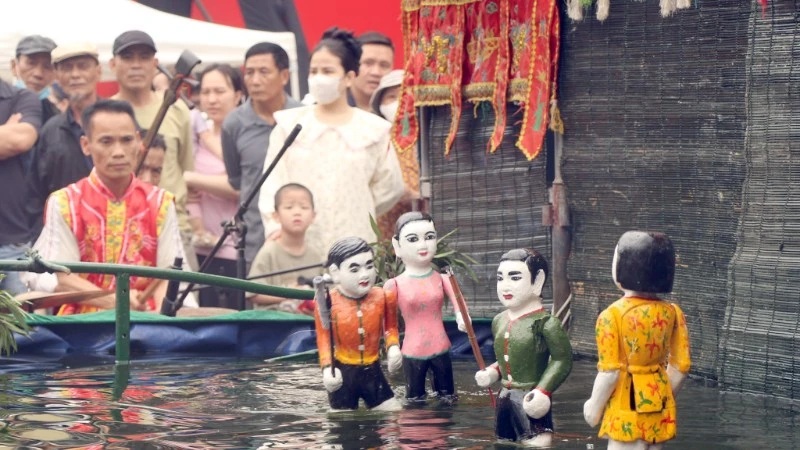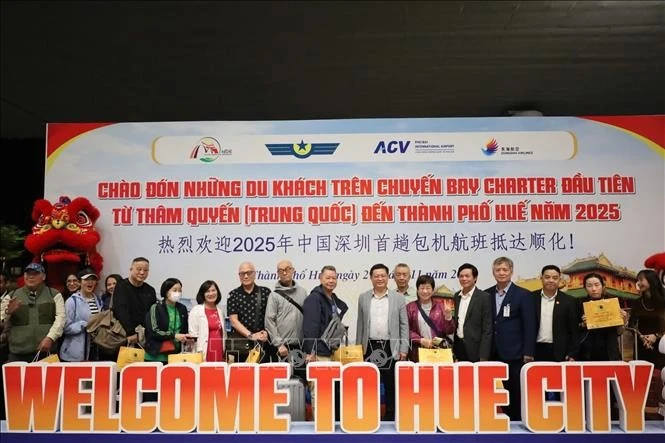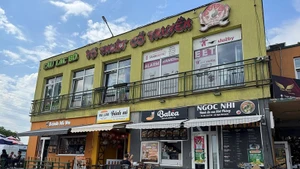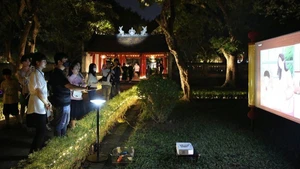Among its efforts, Hoi An’s museum system is increasingly affirming its role as a bridge between past and present, between the local community and visitors.
With innovative displays, interactive experiences, and the application of digital technologies, Hoi An’s network of specialised museums not only helps promote the city’s image but also serves as a practical model for developing closely linked value chains between tangible and intangible heritage spaces.
Spatial linkages and thematic content
In recent years, the heritage city of Hoi An has regularly received accolades in international rankings. According to 2024 statistics, the city (formerly Quang Nam Province) welcomed over 4.4 million visitors, including about 3.2 million international arrivals. In the first half of 2025 alone, Hoi An received 2.8 million visitors, up 17.4% year-on-year.
As of July 1, the city has been administratively reorganised into three wards: Hoi An, Hoi An Dong, Hoi An Tay, and one commune, Tan Hiep, all under the jurisdiction of Da Nang City.
In addition to its festivals, the development of seven thematic museums has contributed significantly to Hoi An’s unique cultural appeal. These include the Hoi An Museum (also known as the Museum of History and Culture), the Sa Huynh Culture Museum, the Museum of Trade Ceramics, the Folk Culture Museum, the Traditional Medicine Museum, the Hoi An Indigenous Products Museum, and the Hoi An Silk Museum. Harmoniously arranged within the ancient town, primarily inside heritage houses, these museums form an interconnected cultural map, allowing visitors to explore on foot within a radius of 1–2 km.
According to cultural researcher Nguyen Chi Trung, former Director of the Hoi An Centre for Cultural Heritage Management and Preservation, artefacts serve as “historical witnesses” helping the public to understand architecture and daily life across different periods. Themed museums allow visitors to engage with the collection in a more direct and convincing way.
Each museum focuses on a specific aspect of Hoi An’s culture. For example, the Sa Huynh Culture Museum displays archaeological artefacts from a 2,000-year-old indigenous civilisation and the Museum of Trade Ceramics showcases the ancient trade routes through pottery originating from Japan, China, and West Asia. The Traditional Medicine Museum recreates indigenous knowledge through local herbs and healing practices. In late 2024, the Hoi An Indigenous Products Museum officially opened, rounding out the specialised museum network with over 300 artefacts, ancient maps, and exhibits featuring distinctive products like bird’s nest, pepper, herbs, fish sauce, cinnamon, tea, and agarwood.
The museum space is closely connected with other heritage sites, creating a seamless cultural exploration route with deep historical layers.
In fact, since the early 1990s, local authorities and the tourism sector in Hoi An have been proactively developing museum models linked to tourism. Notably, international museum standards (under ICOM) have been implemented from the outset, covering collection, preservation, research, education, and communication.
Amidst the national push for digital transformation in museums, Hoi An has placed strong emphasis on staff training, especially in technology application, image processing, and digital communication. As a result, exhibition content is becoming more professional, offering captivating experiences for audiences of all ages and across multiple platforms.
Innovating engagement and amplifying heritage value
One of the key factors behind the appeal of Hoi An’s museums lies in their blend of static displays and hands-on experiences. Many activities such as folk painting, pottery spinning, do paper pressing, tea preparation, traditional cake making, pulse diagnosis, herbal foot baths, are regularly organised, allowing visitors to “touch” and “live” the heritage.
During festivals such as Lunar New Year (Tet) and Mid-Autumn, museums collaborate to host folk markets and guide activities like mask-making, fan painting, and lantern folding. These events attract a wide range of visitors including families with children, international tourists, and local youth.
The museum system also plays a significant role in research, education, and public engagement. Hoi An has actively applied digital tools to bring museums closer to the public. Online exhibitions, livestream sessions, QR-coded artefacts, and short video competitions on heritage promotion are being widely implemented.
Collaborating with the local education sector, museums regularly organise discovery and learning programmes for children aged 5 to 17. A standout initiative is the “Let’s discover museums together” programme by the Hoi An Museum, in which children are grouped by age to explore cultural themes, craft items, and participate in interactive games.
Many local artisans, traditional medicine practitioners, and craftsmen have become “storytellers” at museums, passing down folk knowledge to visitors and younger generations. The strong connection between museums and daily life ensures that heritage remains a living force within the community, nurturing a sense of pride and cultural identity.
This community-centred and well-structured approach has helped diversify Hoi An’s tourism offerings, reducing the pressure on heavily trafficked sites like the Cau bridge, clubhouse halls, and heritage houses.
In the future, Hoi An’s specialised museums will continue to receive technological investments, integrate digital learning materials, and link with nearby attractions such as traditional craft villages, the Cu Lao Cham Biosphere Reserve, and Thanh Ha Pottery Village. The goal is to expand cultural-ecological tour routes and solidify the museum’s role as an inseparable part of the Hoi An discovery journey.
